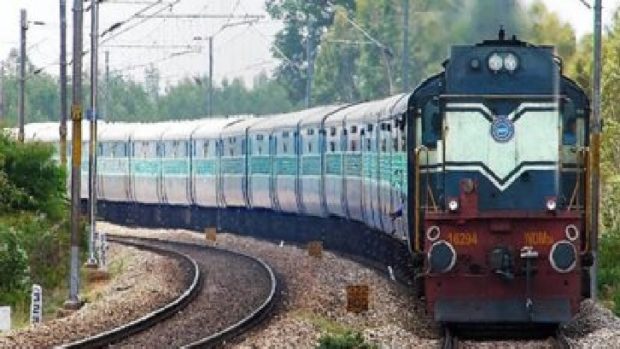
Rlys in talks with states to bring back dedicated freight corridor workers, 7,000 return to worksites
PTI, Jul 6, 2020, 9:29 AM IST

New Delhi: The Railways is in talks with state governments to get labourers back at worksites of its largest infrastructure project, the Dedicated Freight Corridor, after its workforce reduced to 15,000 from 40,000 due to the COVID-19 lockdown.
The Dedicated Freight Corridor Corporation Limited (DFCCIL), the implementing agency of the project, has till now managed to get back 7,000 labourers, taking the number of workers at sites to 22,000 from 15,000.
It brought them back by arranging buses and getting bulk bookings on trains.
To facilitate their movement, the agency also submitted letters to the district administration and arranged for e-passes for contractors.
“Of the 7,000 labourers, who have returned, around 3,250 are highly skilled workers needed for technical works like electrification, mast casting, track works, operating high-end machines, which cannot be done by local workers,” officials said.
“Around 1,250 highly skilled workers have returned to the Mughalsarai unit of the Dedicated Freight Corridor (DFC) project, 500 in two Mumbai units, 300 to the Jaipur unit, 400 to the Noida unit and 800 to the Ajmer unit,” officials said.
“Before the (COVID-19) lockdown we had around 40,000 workers and within 15 days of the Shramik Special trains starting, we were reduced to around 15,000 workers. We are now facilitating the return of around 20,000 more on special trains through bulk bookings or by buses. We now have around 22,000 workers at our sites, but we need to get the full workforce back,” DFCCIL managing director Anurag Sachan told PTI.
Most of the highly skilled workers are from eastern India. While DFCCIL has hired local labourers at worksites, it is difficult to replace a highly skilled workforce, he said.
“We have identified these workers and decided to facilitate their movement and worked with contractors to get them back. We are expecting our entire workforce to be back by September. We are speaking to state governments as well as other agencies,” Sachan said.
The combined length of the western and eastern DFCs is around 2,843 km. It is expected to become operational in 2021. However, due to the COVID-19 pandemic, it may spill over to 2022
Officials said that a bunch of them are coming back to Delhi from Malda in West Bengal by bus. Similarly, around 170 came back by train to Jaipur a few days back.
The DFC consists of the Eastern DFC, a 1,839-km freight line from Ludhiana in Punjab to Dankuni near Kolkata, West Bengal, and the 1483-km western corridor connecting India’s capital, Delhi, and its economic hub, Mumbai.
It was the western corridor from which most workers had left, officials said, and labourers were also unavailable locally.
It was through the lockdown from March till May, that Sachan worried that the DFC might get delayed and wrote to the Uttar Pradesh and Maharashtra governments asking them to let those workers who did not leave for home and were stranded in various worksites to resume work.
For example, around 6,700 were stranded at various camps in Uttar Pradesh and the DFCCIL managed to provide e-passes for some of them to resume work.
Udayavani is now on Telegram. Click here to join our channel and stay updated with the latest news.
Top News

Related Articles More

One dead, 20 rescued after tourist boat capsizes off Calangute beach in Goa

Anna University girl student ‘sexually assaulted’, Biryani seller held

Man hacked to death for opposing drug abuse in Kerala

Three fake policemen arrested for extorting money through honey trap in Delhi

U’khand: 3 killed, 24 injured as bus falls into gorge in Bhimtal
MUST WATCH
Latest Additions
Thanks for visiting Udayavani
You seem to have an Ad Blocker on.
To continue reading, please turn it off or whitelist Udayavani.
























